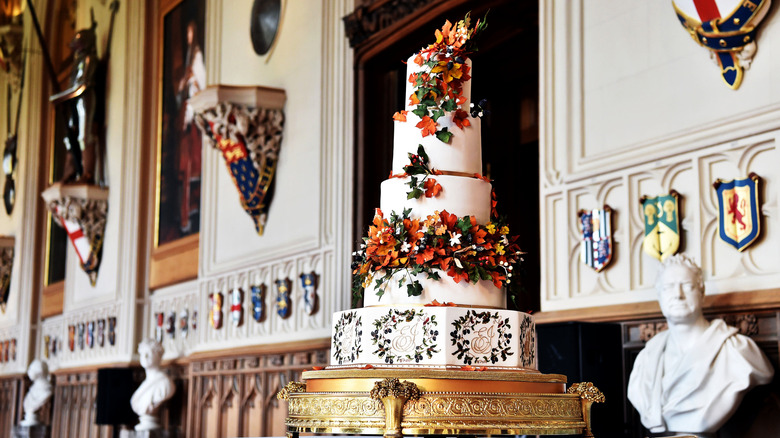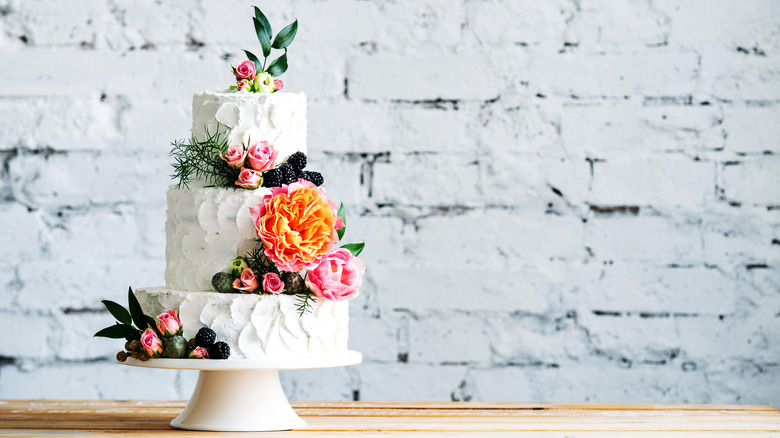What A Traditional English Wedding Cake Really Looks Like
While there is a lot to be said for tradition, we can all agree that some wedding customs are downright problematic. According to the New York Times, throwing the garter stems from a medieval tradition in which wedding guests would rip off pieces of the bride's gown like Cinderella's wicked stepsisters. Don't even get us started on the age-old practice of weddings being a business transaction among men, not a romantic ceremony uniting two people in love (via Mental Floss). Fortunately, there are a few symbolic rituals that are easier to swallow and not rooted in patriarchy or superstition.
One such literal bite of convention is the traditional English wedding cake. On the surface, these cakes look like any other (white, tiered, decorated with flowers, and covered in icing). But there is often a historical truth to chew on just below the fondant-covered surface, in the form of fruitcake. That's right! Don't expect to find a Victorian sponge cake lurking under all that frosting. Per Food & Wine, English wedding cakes have been made of dense, durable, liquor-infused fruitcakes since medieval times.
English traditions include rum-soaked fruitcakes and sword cake-cutting
The choice to make a wedding cake out of fruitcake makes sense for several reasons. For one, the brandy or rum used to make a fruitcake acts as a natural preservative, meaning you can make your wedding cake far in advance of the big day without fear of accidentally poisoning your guests (via Food & Wine). In the olden days, before refrigeration, a cake that could stand the test of time was not only the key to having guests survive your wedding, but it was also symbolic of the guests' wishes for the marriage itself: sweet, long-lasting, and full of alcohol. (Just kidding about that last one.) Vogue points out that things like dried fruit, spirits, and spices were not easy to come by, so a fruitcake also represented prosperity and wealth.
The traditional English wedding fruitcake is still a staple of royal weddings in England today. Although, according to Eater, Prince Harry and Meghan Markle broke the cake mold by serving their guests lemon sponge cake with an elderflower cordial. Guests of Queen Elizabeth's wedding to the late Prince Philip, back in 1947, were not so lucky — that particular wedding featured a 9-foot tall, four-tiered fruitcake that weighed around 500 pounds. Eater also points out that the royals continue to follow another English wedding tradition when cutting cakes: They use a family sword to slice the dessert in a cake-sabering ceremony. Now that is a tradition we can get behind!

